'Galician Blonde' cattle are known as 'Rubia Gallega' in Spain
The Galician Blonde cattle breed is known as ‘Rubia Gallega’ or ‘Raza Rubia Gallega’ in Spain  where it originates. It is also written as 'Galician Blond'. It is closely related to the Minhota which are found in Portugal. There was crossing of some dual purpose breeds with indigenous cattle in Portugal and Spain. Rubia Gallega is raised primarily for beef now. It is renowned for its gentle temperament, hardiness and adaptability, together with the production of high-quality meat in animals with very good conversion rates.
where it originates. It is also written as 'Galician Blond'. It is closely related to the Minhota which are found in Portugal. There was crossing of some dual purpose breeds with indigenous cattle in Portugal and Spain. Rubia Gallega is raised primarily for beef now. It is renowned for its gentle temperament, hardiness and adaptability, together with the production of high-quality meat in animals with very good conversion rates.
The Rubia Gallega ranked as the second most popular of the four major native cattle beef breeds in Spain with the following counts:
| Asturian Valley | 107,818 |
| Rubia Gallega | 35,476 |
| Retinta | 27,343 |
| Asturian Mountain | 14,275 |
As a beef breed, the Rubia Gallega has excellent growth, very good meat quality and good muscling.
Ternera Gallega is a Protected Geographical Indication (from Indicación Geográfica Protegida). Since 1996 it has been recognized by the European Union, being the first beef with certification. The meat marketed under the PGI Ternera Gallega is exclusively from calves born, raised and slaughtered in Galicia, which come from Rubia Gallega and Morena Gallega breeds and their crosses and which have passed a rigorous control program.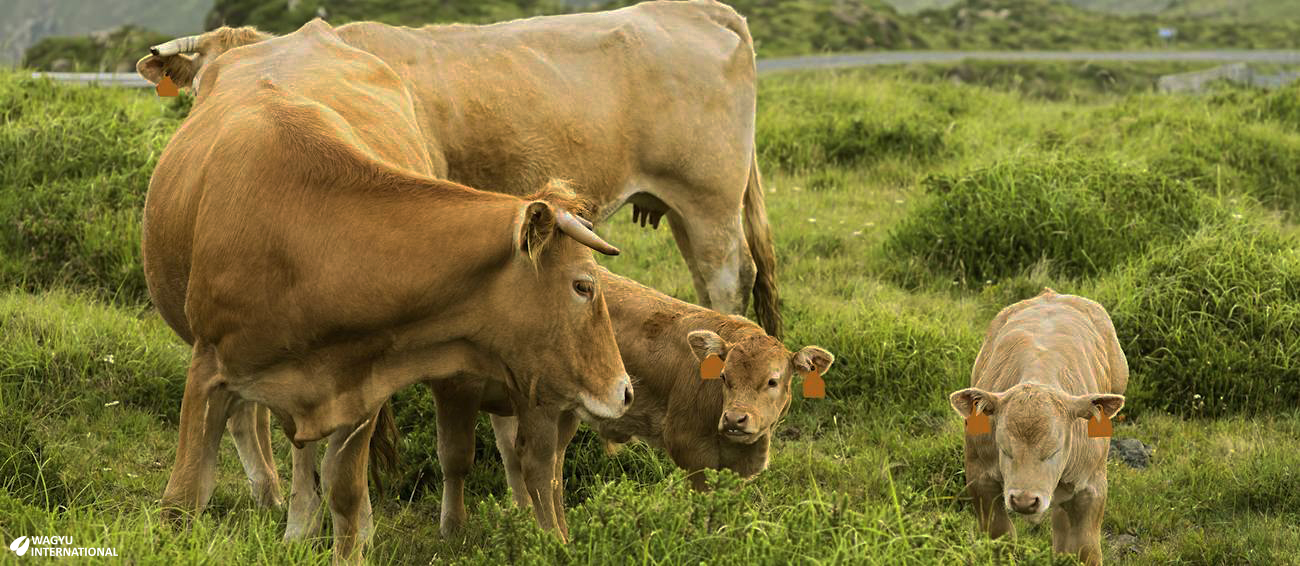
The control ranges from the birth of the calves, their rearing, feeding and health care, to their slaughter and presentation of the meat at the points of sale. The feeding of the calves is based on suckling from a mother, forages and concentrates from vegetables and free of any animal by-product or prohibited substance.
Ternera Gallega that is sold as ‘Ternera’ has a yellow label. This veal comes from calves that have been fed on fodder of vegetables and cereals. The ‘Suprema’ brand comes from calves bred in traditional farming that are fed exclusively with their mother's milk until they are seven months old. Characterized by its light pink to pale red colour and creamy light yellow fat, Ternera Gallega is exquisitely soft, succulent and full of flavour.
Cheeses from Rubia Gallaga:
Rubia Gallaga are not prolific milkers but they can produce sufficient milk to raise twin calves. The milk comes from the dual purpose breeds that were crossed over the traditional breeds in Spain.
San Simón PDO cheese is made from pasteurized milk of the Rubia Gallega, Pardo-Alpina and 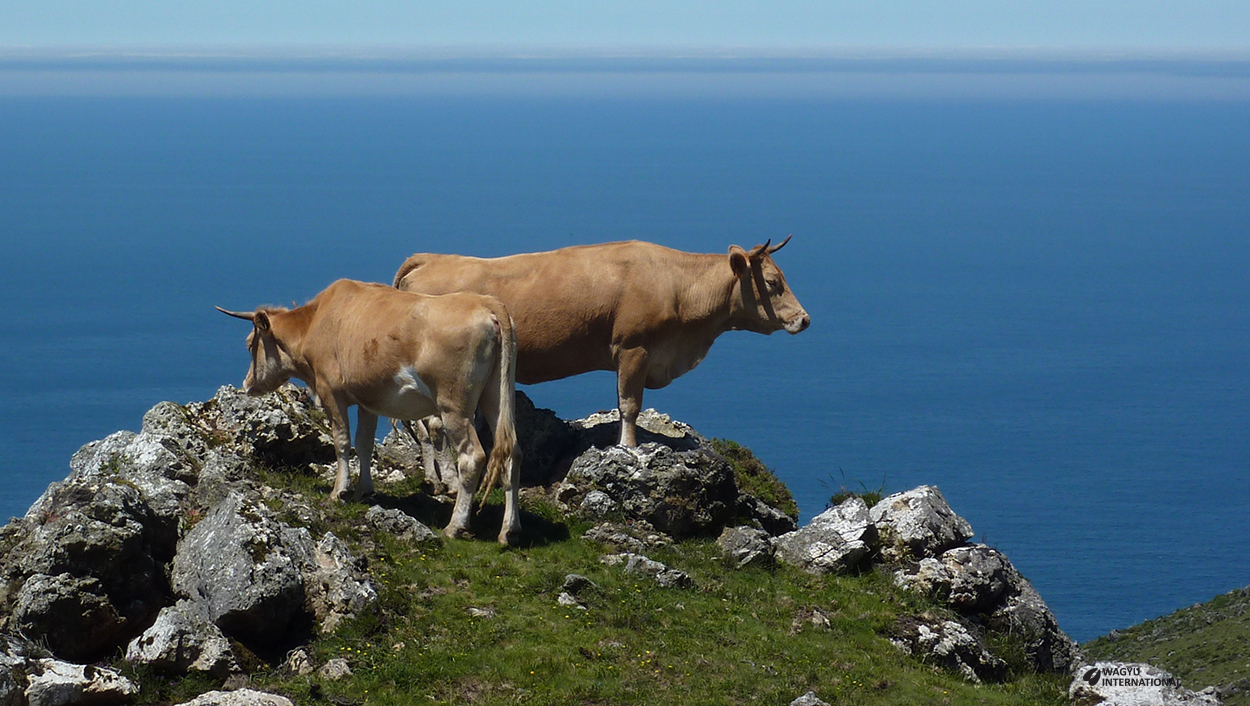 Friesian cow breeds in Galicia. This remote region of Spain is surrounded to the west and north by the Atlantic Ocean and by mountains to the Mediterranean. This isolation fostered an ancient cheese culture. Here the Galicia cows graze on the lush green pastures and bear milk that its people have been making into cheese for generations. The PDO designates it to be Protected Designation of Origin. Sometimes POD is used and this is from Denominazione di Origine Protetta and has the same meaning.
Friesian cow breeds in Galicia. This remote region of Spain is surrounded to the west and north by the Atlantic Ocean and by mountains to the Mediterranean. This isolation fostered an ancient cheese culture. Here the Galicia cows graze on the lush green pastures and bear milk that its people have been making into cheese for generations. The PDO designates it to be Protected Designation of Origin. Sometimes POD is used and this is from Denominazione di Origine Protetta and has the same meaning.
San Simón is a semi-soft rather elastic paste cheese with a hard, smooth, birch-smoked rind. 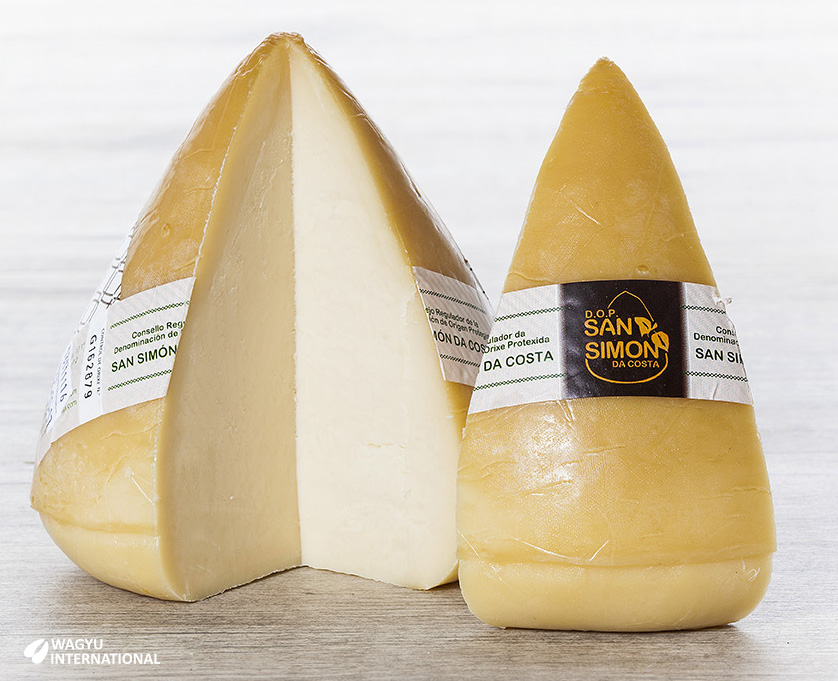 It is aged two to four weeks, lightly pressed and then gently smoked for two weeks after leaving the mould. It has a conical shape and a full but not extreme flavour that is buttery and sweet in the mouth with a smoky aftertaste that ranges from mild to piquant.
It is aged two to four weeks, lightly pressed and then gently smoked for two weeks after leaving the mould. It has a conical shape and a full but not extreme flavour that is buttery and sweet in the mouth with a smoky aftertaste that ranges from mild to piquant.
It can be enjoyed with fruit based desserts. Serve with celery, fresh bread, hazelnuts or green apples tart. Melts easily and adds great flavour to casseroles and poultry. Serve as part of tapas with chorizo, olives and Marcona almonds. Pairs up with white wines or brut cava.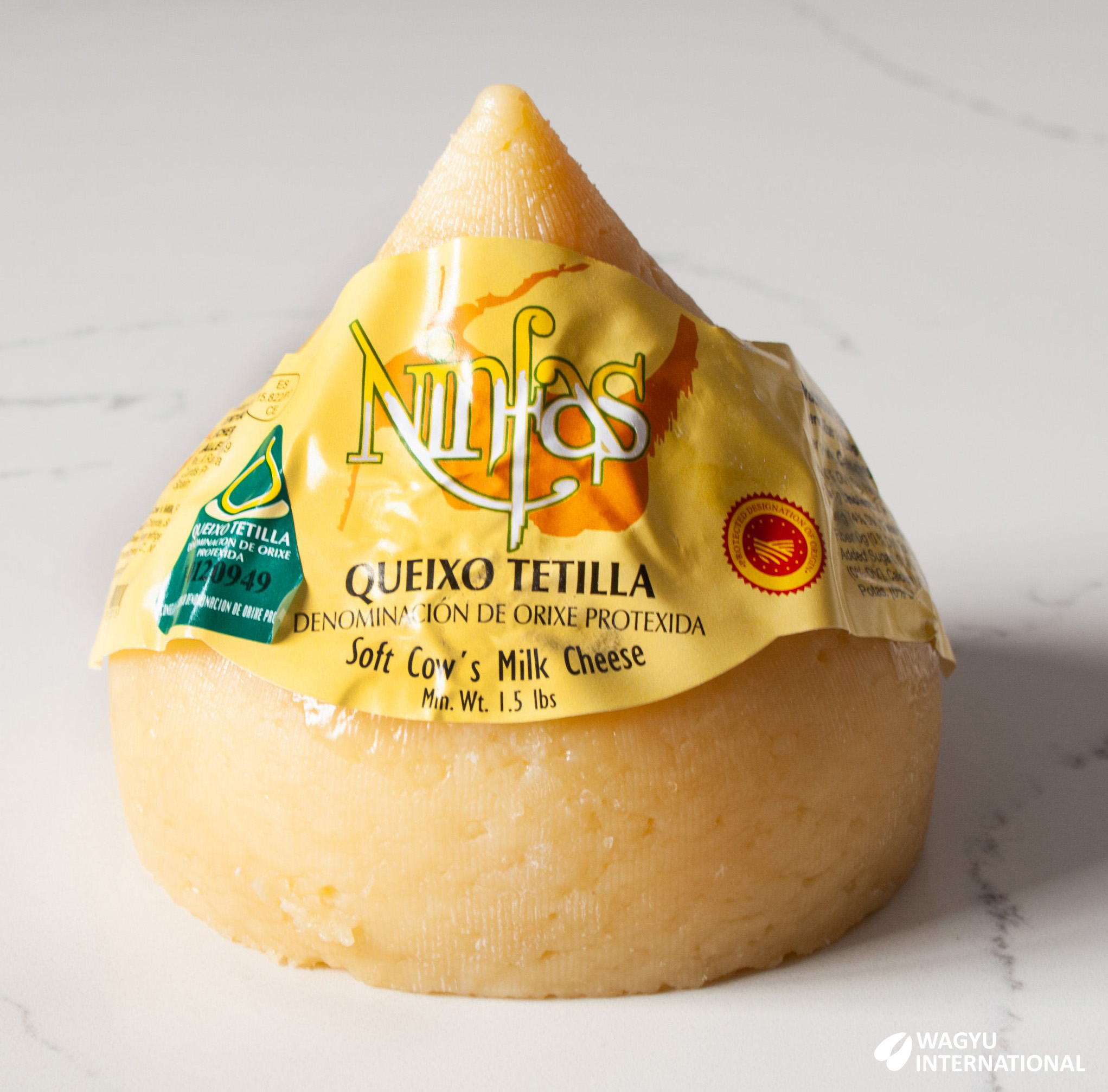
Since 1992 there have been another three Galician cheeses that have PDO status. Tetilla is a typical Galician cheese made from the herds of Friesians, Alpine Browns and Rubia Gallega cows. The name Tetilla is Galician for “nipple”, which describes the shape of the cheese – a pear-shaped cone.
The first known report about Tetilla cheese dates from the 18th century, but the cheese is probably older. First proven testimony dates back to 1753, in a letter from Juan Bermúdez de Novoa, chaplain of San Xoan de Torés when he was sending “two pieces of bacon, a leg of cow, half a dozen cheeses, three and a half dozen Tetillas, three and a half dozen pig tongues” to his master, the Marquis of Camarasa.
This cheese has a pale yellow, thin, natural rind or sometimes no rind can be seen at all. Its texture is soft, thick and smooth with scatterings of air pockets. Yellowish ivory in colour, Tetilla has a creamy mouthfeel with a buttery, slightly bitter and tangy flavours surrounding the palate. The maturing, which takes place between 10 and 30 days, happens in the hot and humid climate of Galicia.
Try Tetilla with dry full-bodied wine, sherry, young whites, manzanilla and especially the Galician whites - Albariño or Ribeiro. Spanish love their cheese with quince paste, fruit, crackers, baked dishes and bread.
Breed association - La Asociación Nacional de Criadores de Ganado Vacuno Selecto de Raza Rubia Gallega
The National Association of Breeders of Selected Cattle of the Rubia Gallega Breed 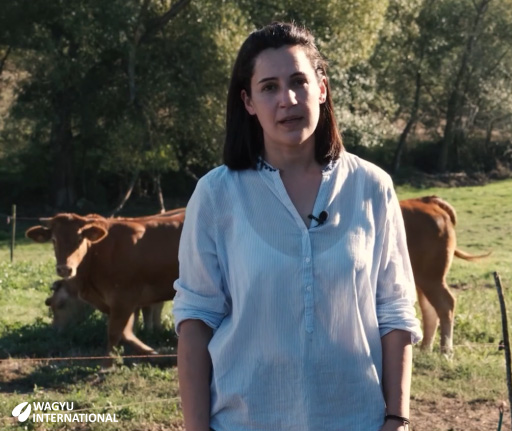 (A.C.R.U.G.A.), is responsible for administering of the Stud Book and the Improvement Programme of Rubia Gallega breed throughout Spain. It has been collaborating with the Ministry of the Environment and Rural and Marine Affairs (MARM, formerly MAPA) since 1975 and is included in the Register of Associations recognised by the European Union, and is responsible for the conservation, evaluation, and selection of the breed, as well as the dissemination, promotion, enhancement, and expansion of the breed at national and international level.
(A.C.R.U.G.A.), is responsible for administering of the Stud Book and the Improvement Programme of Rubia Gallega breed throughout Spain. It has been collaborating with the Ministry of the Environment and Rural and Marine Affairs (MARM, formerly MAPA) since 1975 and is included in the Register of Associations recognised by the European Union, and is responsible for the conservation, evaluation, and selection of the breed, as well as the dissemination, promotion, enhancement, and expansion of the breed at national and international level. 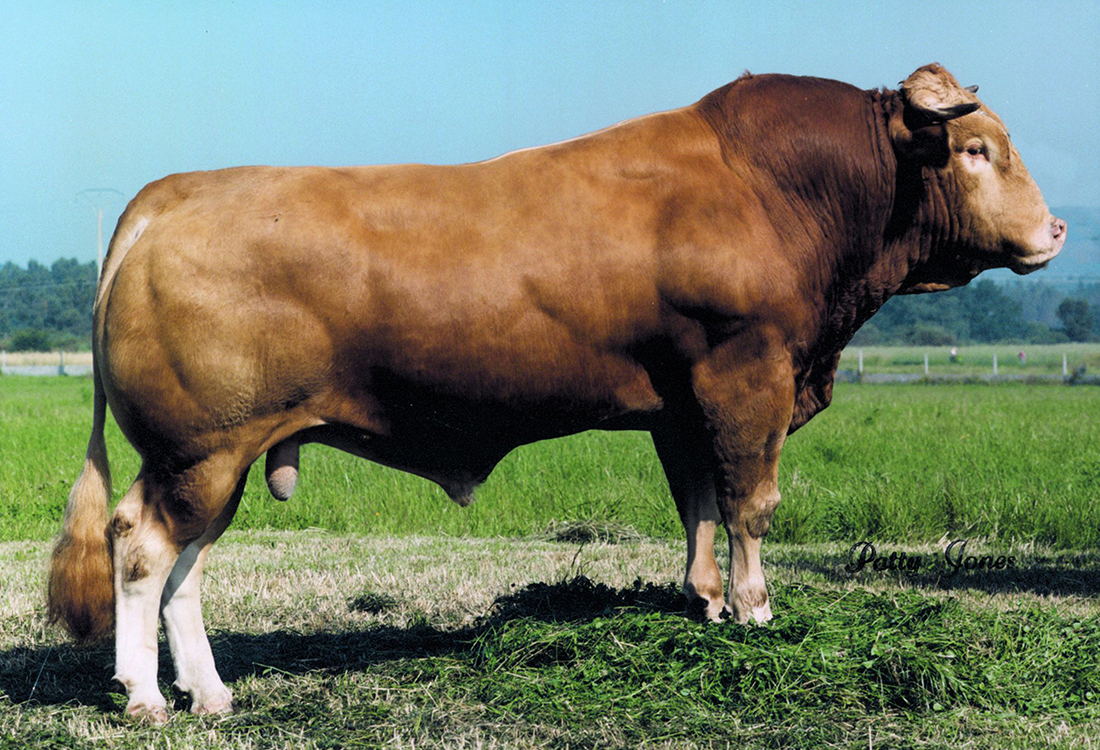
The ACRUGA headquarters are at the Gaioso-Castro Breeding Centre. There are facilities at Xenética Fontao and at the Galician Animal Selection and Reproduction Centre.
President is César Dorado Pin and Technical Director is Laura Arias. ACRUGA is a non-profit organisation and was constituted on 20th October 1968.
The Breeding Programme that was developed in February 2019 is supported by the team led by Dr Altarriba Farrán from the Department of Anatomy, Embryology and Animal Genetics of the University of Zaragoza.
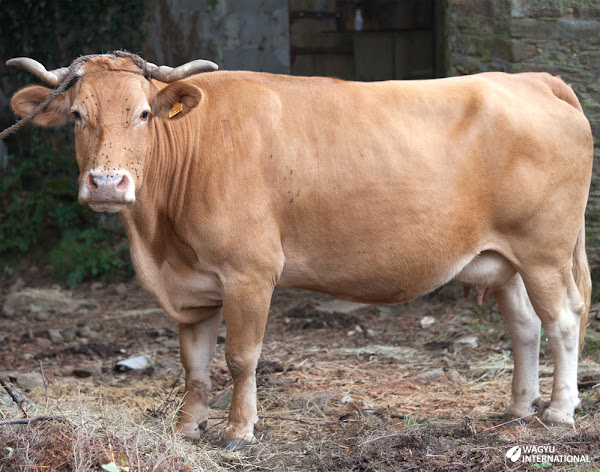 The main objective of the programme is to improve the productive efficiency of this breed, which is based on obtaining quality meat from a calf slaughtered before 10 months of age and reared in a specific production system. Suckling from the mother occurs to about 7 months of age.
The main objective of the programme is to improve the productive efficiency of this breed, which is based on obtaining quality meat from a calf slaughtered before 10 months of age and reared in a specific production system. Suckling from the mother occurs to about 7 months of age.
For more than 50 years, ACRUGA has been working for the Rubia Gallega breed and its breeders, developing the conservation, evaluation, and selection of the breed, as well as the dissemination, promotion, encouragement and expansion of the breed at national and international level. The purpose of the work established in the association is based on preserving the inherited genetic heritage, improving it and adapting it to the times, as well as defending the interests of its members.
There were 1,645 farms with Rubia Gallega during 2019. There is a total of 37,450 animals of which 23,450 are breeding females and 484 breeding males. 277,782 doses of semen were marketed, 121,172 for domestic use and 156,610 were exported.
7,217 animals were slaughtered under the certified 'Suprema' Ternera Gallega scheme.
Origins and related breeds:
Traditional cattle were located in Monteroso and Carballino in north western Spain. There was crossbreeding with Swiss Original Braunvieh, Simmental, South Devon and Portuguese Barrosã. Finally British Shorthorn were crossed later in the 20th century. The breeds that evolved from crossing like Rubia Gallega have replaced the traditional cattle that were used for draught have now virtually become extinct.
The herdbook for Rubia Gallega was established in 1933 and the breed association was formed 35 years later.
The total registered population of the breed was 39,971 at the end of 2015.
Related breeds
The Barrosã (also Barrosão) breed numbered more than 200,000 in the Barrosa region of northern Portugal. 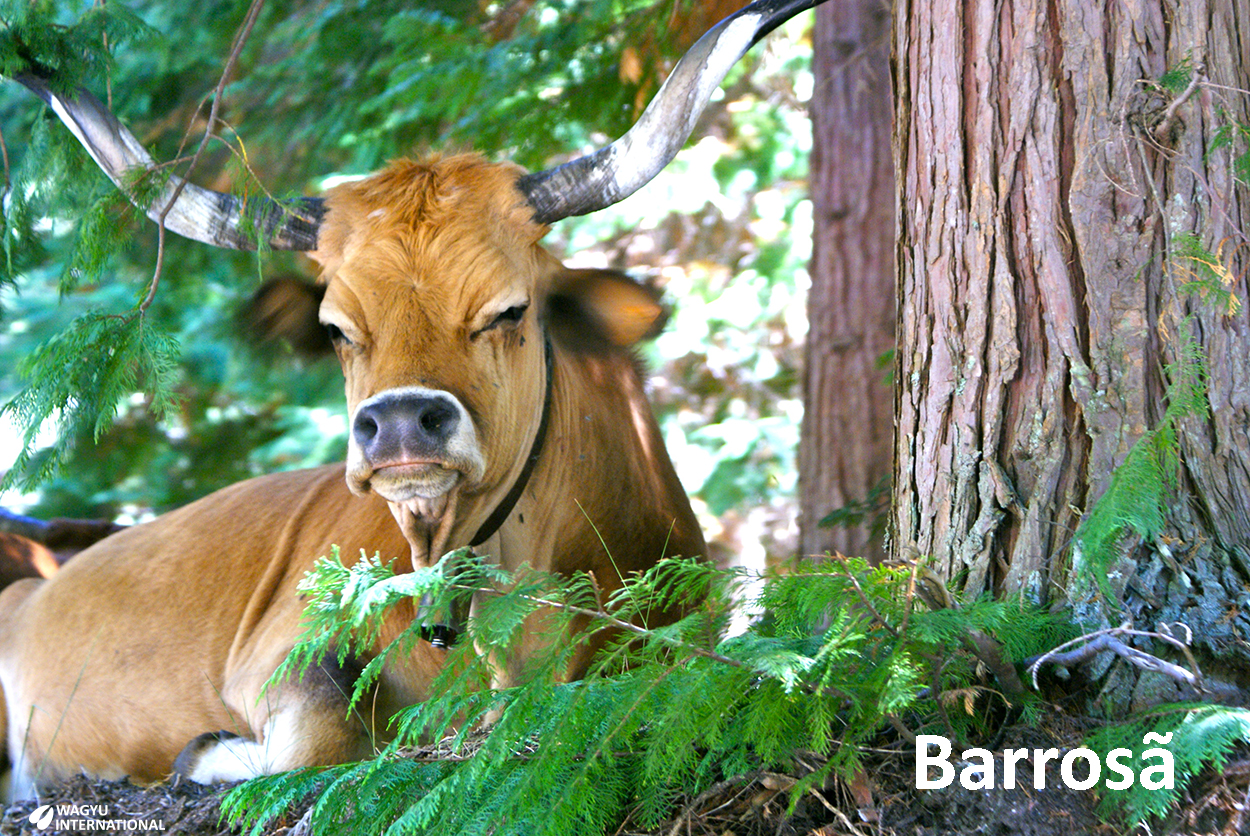 They are the ancestral inhabitants of the highest lands of northern Portugal so are neighbouring with Galicia in Spain. Due to the industrial revolution and the evolution of commercial breeds that were more productive for meat and milk production, the numbers of Barrosã dwindled down to only about 7,000 left by 2005. They are characterized by long horns which can grow well over 100 cm in length. The Cachena cattle (Barrosa ananicado) in Galicia, Spain are a smaller version of the Barrosã breed. The black colouring around the eyes make it look like they are wearing spectacles. Adult male Cachena bulls weigh on average 550 kg and females 350 kg; having adapted to the mountainous terrain of their habitat.
They are the ancestral inhabitants of the highest lands of northern Portugal so are neighbouring with Galicia in Spain. Due to the industrial revolution and the evolution of commercial breeds that were more productive for meat and milk production, the numbers of Barrosã dwindled down to only about 7,000 left by 2005. They are characterized by long horns which can grow well over 100 cm in length. The Cachena cattle (Barrosa ananicado) in Galicia, Spain are a smaller version of the Barrosã breed. The black colouring around the eyes make it look like they are wearing spectacles. Adult male Cachena bulls weigh on average 550 kg and females 350 kg; having adapted to the mountainous terrain of their habitat.
The Barrosã breed is one of the ancestors of the Rubia Gallega, yet there are other cattle in 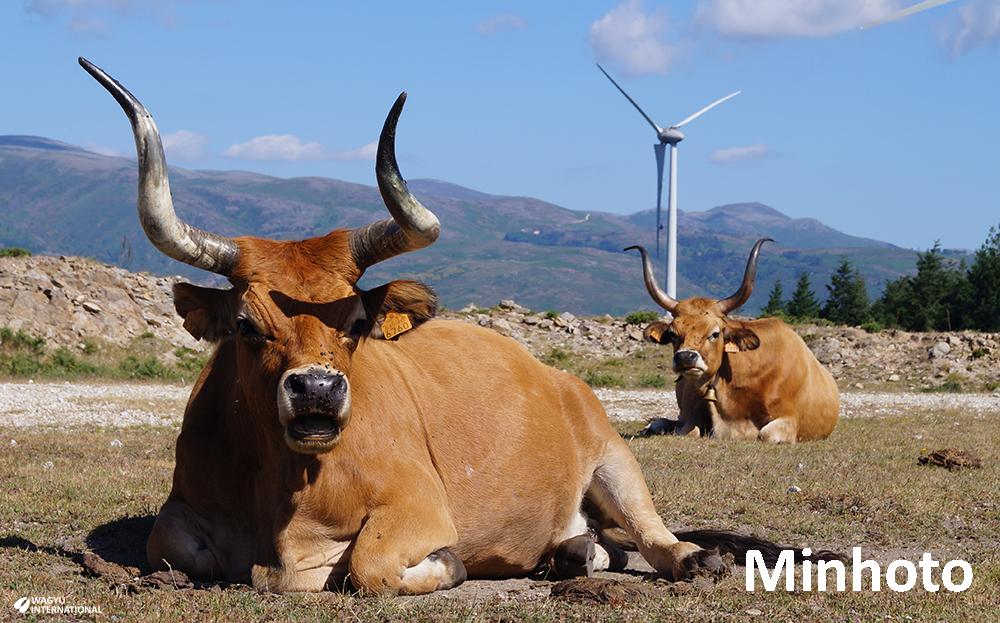 Portugal that resemble modern day Rubia Gallega. They were initially called Galega. They originated in the former northern part of Minho province of northern Portugal. This is now known as the Viana do Castelo district. In the mid-nineteenth century the Galega numbered about 65,000 head and constituted 50% of all cattle in Minho. By 1940 their numbers had fallen to about 9,500 in Portugal. The breed was formally called Galega in 1996 and a herd-book established in 1997. In 2002 the name of the breed was changed to Minhota so as to distinguish it from the Spanish Rubia Gallega breed of Galicia immediately to the north. In 2016 the population was reported to total about 13,000 head, with 120 bulls and over 7,000 breeding cows. In 2021 its status was reported as "at risk".
Portugal that resemble modern day Rubia Gallega. They were initially called Galega. They originated in the former northern part of Minho province of northern Portugal. This is now known as the Viana do Castelo district. In the mid-nineteenth century the Galega numbered about 65,000 head and constituted 50% of all cattle in Minho. By 1940 their numbers had fallen to about 9,500 in Portugal. The breed was formally called Galega in 1996 and a herd-book established in 1997. In 2002 the name of the breed was changed to Minhota so as to distinguish it from the Spanish Rubia Gallega breed of Galicia immediately to the north. In 2016 the population was reported to total about 13,000 head, with 120 bulls and over 7,000 breeding cows. In 2021 its status was reported as "at risk".
The Minhota is genetically close to the Ramo Grande of the Azores, and may have contributed to the development of the Arouquesa and the Marinhoa of Portugal, and the Caracu of Brazil.
Distribution:
Rubiga Gallega are predominantly located in Galica in the north western corner of Spain. 75% is concentrated in the province of Lugo in Galica.
There are also some on farms in Aragon, Andalusia, Extremadura, Castilla León, Castilla la Mancha, and Madrid.
Characteritics and description:
The Rubia Gallega cattle are medium sized animals. Average live body weight of the mature cows is around 700 kg. And the mature bulls on average weight around 1,000 kg.
The weights recorded by five sires that were advertised in an Indogal semen catalogue have been summarised in this table to show the heaviest:
| Age of recording | Average weight | Range |
| Birth | 45.8 kg | 40 - 50 kg |
| 7 months | 396.6 kg | 346 - 463 kg |
| 12 months | 610.0 kg | 530 - 610 kg |
Height of the bulls is about 145 cm at the withers and cows are approximately 135 cm.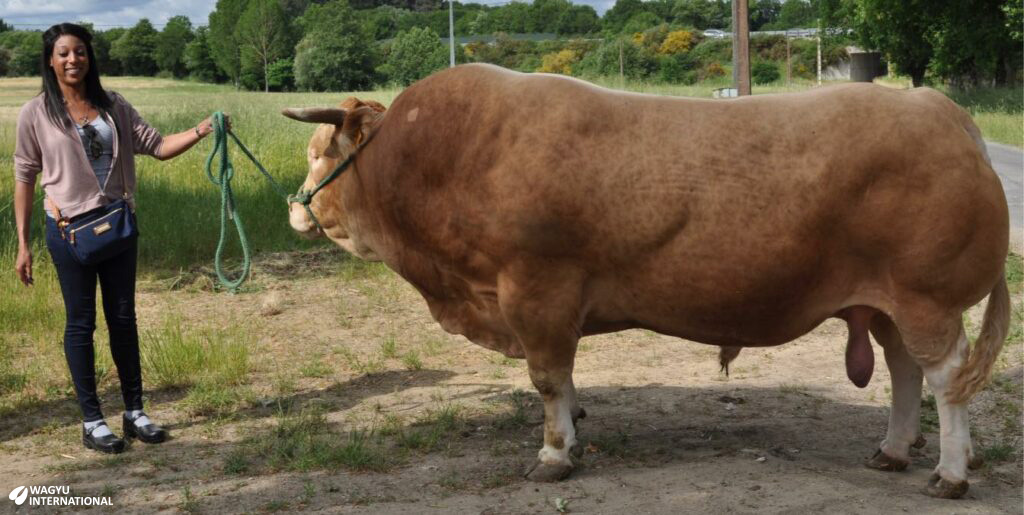
They have red-blond, wheaten or cinnamon-coloured coats which are uniform blonde or with centrifugal tones. Variations between light and dark colours are observed, denominating marela (light) to bermella (dark) respectively. White spots or hairs of different colour to the coat are not allowed.
Skin colour is pink and they have pink mucous membranes.
Both bulls and cows usually have horns that are usually of medium length and curved. It is not accepted that they are totally black or slate.
Rubia Gallega are characterised by strong reproductive qualities: sexually precocious, fertile, short calving interval, lactation ability to raise twin births, longevity (21 years), ease of calving (less than 2% of dystocia) and good maternal qualities and gentle nature.
Beef eating quality:
Much has been written above about the quality of veal from Rubia Gallaga that is branded Ternera Gallega from Galicia and younger than 10 months of age.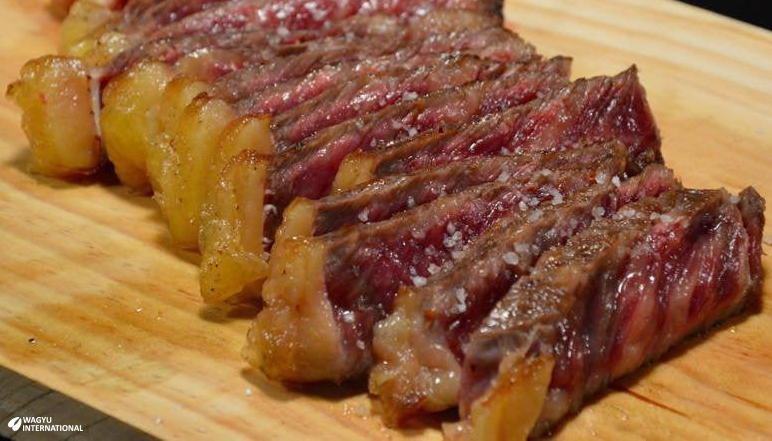
There is also Añojo (yearling) slaughtered between 10 and 18 months of age, and Cebón that is slaughtered between 18 and 30 months of age.
The fast growth rate produces large carcasses at the age of eight years from natural grassland. Some are run through to 15 years of age to enable the marbling to matures, ultimately giving the beef a distinctly deep flavour.
A longer dry-aging process is required than for other breeds in Spain. Connoisseurs 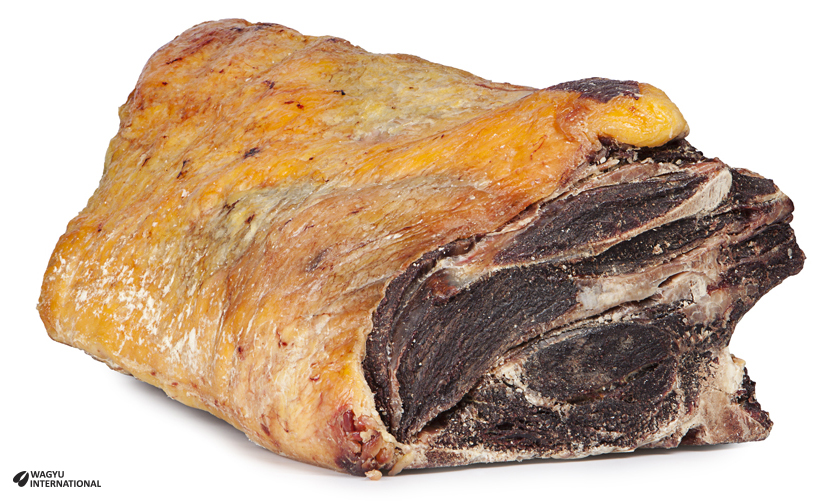 recommend dry-aging process of at least 50 days to ensure a more flavour and tender beef. Besides, longer dry-aging maximizes the flavours from natural feeding. The meat colour is intense cherry red with a yellowish hue fat cover. It highlights the intense lard aroma. In the mouth it has a strong intensity and persistence flavour with a lot of character and a fibrous texture.
recommend dry-aging process of at least 50 days to ensure a more flavour and tender beef. Besides, longer dry-aging maximizes the flavours from natural feeding. The meat colour is intense cherry red with a yellowish hue fat cover. It highlights the intense lard aroma. In the mouth it has a strong intensity and persistence flavour with a lot of character and a fibrous texture.
Chefs have also altered their cooking methods for this particular cut. For their traditional 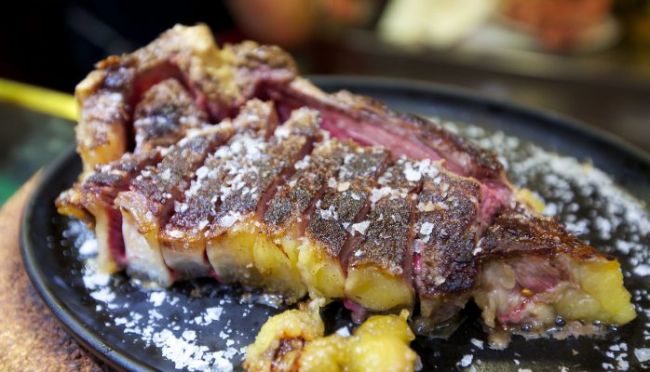 steaks, the steak experts have been cooking at a very high temperature for a short time, over an open flame. The Spanish way for this beef is to cook it a lot slower on a flat-top grill, so it gets almost crisp around the outside while remaining rare in the middle. The steak is then removed from the bone and sliced onto a hot serving plate.
steaks, the steak experts have been cooking at a very high temperature for a short time, over an open flame. The Spanish way for this beef is to cook it a lot slower on a flat-top grill, so it gets almost crisp around the outside while remaining rare in the middle. The steak is then removed from the bone and sliced onto a hot serving plate.
Genetic exports from Spain:
56% of the Rubia Gallega semen that is sold is exported annually.
Indonesia
Genetics improvement programs have been operating in the Galician region since 1990. 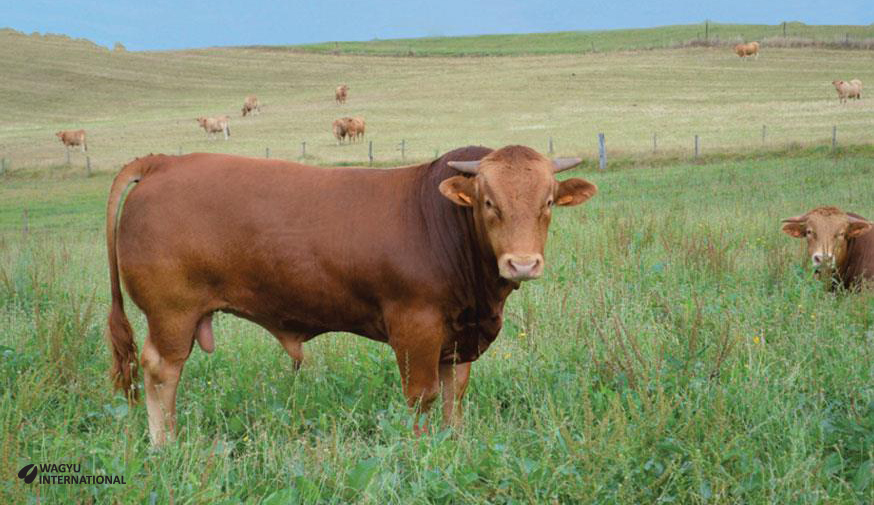 Indogal is a public company that was created in 1998 through participation with the Galician Regional Government, through F.O.G.G.A. (Galician Fund of Agrariam Guarantee), and breeders associations: F.E.F.R.I.G.A. (Galician Holstein Federation) and A.C.R.U.G.A. (National Association of Rubia Gallega cattle breeders). Indogal is authorised to supply Rubia Gallega genetics to Indonesia.
Indogal is a public company that was created in 1998 through participation with the Galician Regional Government, through F.O.G.G.A. (Galician Fund of Agrariam Guarantee), and breeders associations: F.E.F.R.I.G.A. (Galician Holstein Federation) and A.C.R.U.G.A. (National Association of Rubia Gallega cattle breeders). Indogal is authorised to supply Rubia Gallega genetics to Indonesia.
In promotion literature, PT Indogal Trading in Jakarta claims: “While Indonesian local breeds have an average weight at birth of 35 kilograms, Rubia Gallega has an average of 45 kilograms...
“At seven months Rubia Gallega can get to 300 kilgrams, while the average nowadays in Indonesia is of 110 kilograms. At 12 months Rubia Gallega can get to 600 kilograms. Its conversion rate from 1 to 7 months is 5.26 in males and 4.31 in females. Our ADG from 1 to 7 months is of 1.23 kg/day, achieving 1.6 to 1.8 kgs/day while fattening. The carcass performance is 62%, with 81.34% meat, 12.77% bone and 3.44% fat. ”
Brazil
The dual-purpose Rubia Gallega is considered to be a suitable sire to cross over cows in Brazil by BEEꟻ FRIEND at Fazenda Lavragem in Maragogi, Alagoas. They are expected to adapt to the climatic conditions of Northern Brazil and achieve outstanding meat quality results over time.
USA
Reserve Cattle Company has been farming since 2010 on 105 acres in Garden City in Missouri 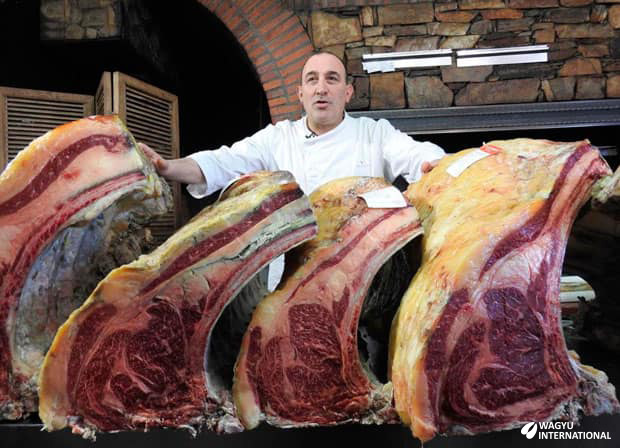 and successfully raise Wagyu. They won awards in the American Royal Association's 2015 Steak Competition but Chris Brant and his wife, Veronica Anwuri, visited Spain in 2019 for on-farm visits, as well as restaurants to explore the Rubia Gallega breed.
and successfully raise Wagyu. They won awards in the American Royal Association's 2015 Steak Competition but Chris Brant and his wife, Veronica Anwuri, visited Spain in 2019 for on-farm visits, as well as restaurants to explore the Rubia Gallega breed.
After tasting the beef they were not disappointed and decided to import the first ever Rubia Gallega genetics to North America. These genetics arrived as frozen embryos from Galicia, Spain. The first calves were born at Trans Ova Genetics facilities in Sioux Center, Iowa.
Reserve Cattle Company plans to market their Rubia Gallega to restaurants in Las Vegas, Chicago, and Washington D.C. starting in 2022.
Australia
Blackmore Holdings have been producing Wagyu in Australia for 25 years but was impressed 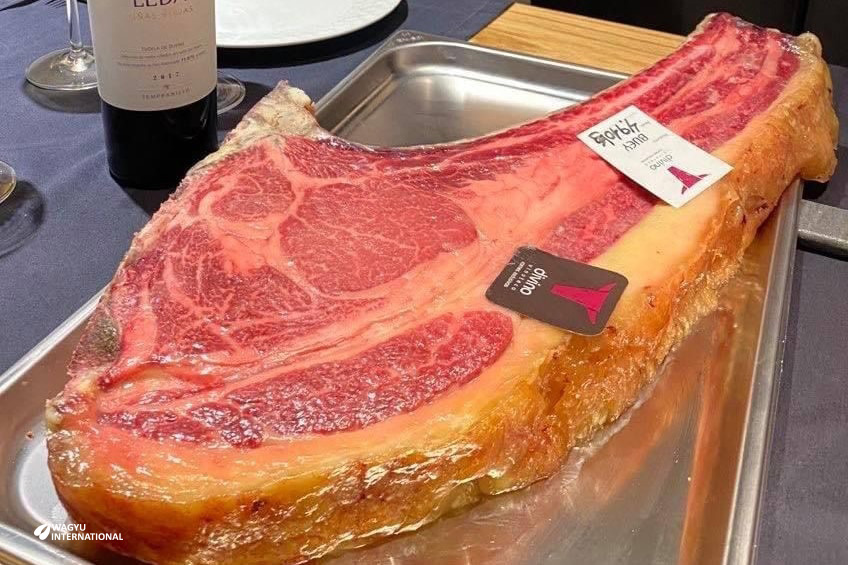 when he tasted Rubia Gallega during a visit to France. He imported embryos and semen five years ago from Spain and started his Rubia Gallega herd on East Mt Ada.
when he tasted Rubia Gallega during a visit to France. He imported embryos and semen five years ago from Spain and started his Rubia Gallega herd on East Mt Ada.
"I suppose we bought cattle from five to six different farms plus the blood lines from the Spanish bull stud," Blackmore said.
The first Australian-bred steer has been processed. It weighed 1,098 kg live and produced a massive 735kg carcass. This is a challenge for the abattoirs to handle so they cannot be raised at the same weights as in Spain.
Blackmore is aiming to slaughter at 30 to 33 months of age. The end product might turn out to be more like the Cebón in Galicia than as originally planned as pressures increase for sustainable production.
References
Cheese.com. Tetilla
French, M.H., I. Johansson (1969). Razas Europeas de Ganado Bovino, volume II (in Spanish). Rome: Food and Agriculture Organization of the United Nations.
Julio S. Inglez de Sousa, Aristeu Mendes Peixoto, Francisco Ferraz de Toledo, Klaus Reichardt,1998. Enciclopédia agrícola brasileira: C-D, Volumen 2. São Paulo: Editora da Universidade de São Paulo.
Long, W., 2021. ABC Rural. Rubia Gallega, the new premium beef coming to fine-dining restaurants. 10 October 2021.
Porter, Valerie, Lawrence Alderson, Stephen J.G. Hall, D. Phillip Sponenberg, 2016. Mason's World Encyclopedia of Livestock Breeds and Breeding. Wallingford: CABI
Spanish Fine Cheese.com. San Simón Cheese P.D.O.
TransOva, 2021. Rubia Gallega - A new breed in North America. 10 March, 2021
DISCLAIMER Wagyu International provides information that has been supplied by other parties and gives no warranty (express or implied) as to the data completeness, accuracy or fitness for a particular purpose.
Return to top of page and Menu
Return to top of page and Menu
